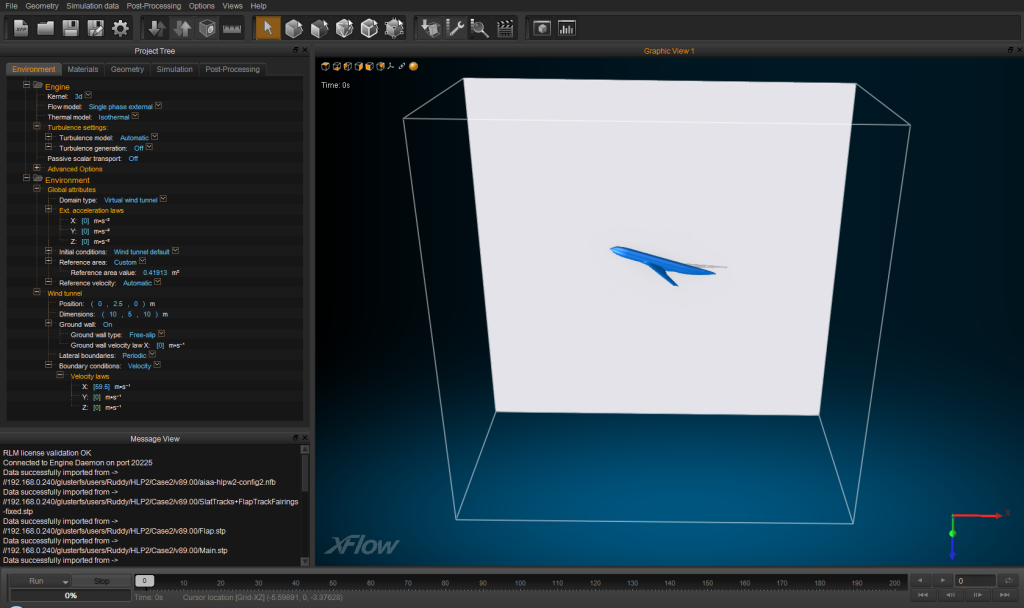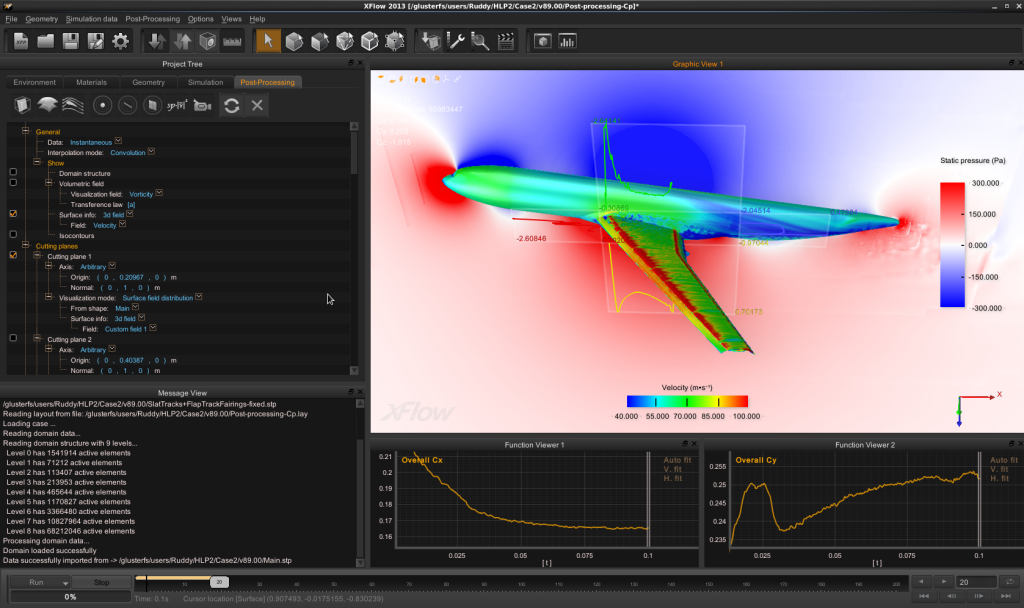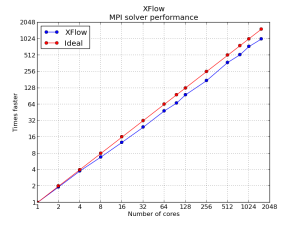Breaking limitations
The Challenge of Traditional CFD
In the traditional mesh-based approach, the reliability highly depends on the quality of the mesh, and engineers spend most of the time
working on the discretization.
Furthermore, there are severe difficulties in dealing with the changes in the topology of the domain for problems involving the
presence of moving parts or fluid-structure interaction.
Why is XFlow so different to the current CFD solutions?
Simple – particle-based approach that avoids the traditional meshing process
XFlow is a next generation CFD software system that uses a proprietary state-of-the-art Lattice Boltzmann technology, and is
specifically designed for companies who require accurate feedback on flow simulation, transient aerodynamics, water management
and fluid-structure interaction.
The XFlow approach to CFD simplifies the workflow, minimizes the presence of algorithmic parameters and avoids the traditionally
time consuming meshing process.
With XFlow, complex modeling becomes affordable in a straightforward way.

Example of mesh required by traditional CFD
Unique CFD approach
How is XFlow different? What is going on inside?
Beyond Lattice Boltzmann
In non-equilibrium statistical mechanics, the Boltzmann equation describes the behavior of a gas modeled at mesoscopic scale. The
Boltzmann equation is able to reproduce the hydrodynamic limit but can also model rarified media with applications to aerospace,
microfluidics or even near vacuum conditions.

As opposed to standard MRT, the scattering operator in XFlow is implemented in central moment space, naturally improving the
Galilean invariance, the accuracy and the stability of the code.
Particle-based kinetic solver
XFlow features a novel particle-based kinetic algorithm that has been specifically designed to perform very fast with accessible
hardware.

The discretization approach in XFlow avoids the classic domain meshing process and the surface complexity is not a limiting factor
anymore. The user can easily control the level of detail of the underlying lattice with a small set of parameters, the lattice is tolerant to
the quality of the input geometry, and adapts to the presence of moving parts.
Adaptive wake refinement
XFlow engine automatically adapts the resolved scales to the user requirements, refining the quality of the solution near the walls,
dynamically adapting to the presence of strong gradients and refining the wake as the flow develops.
Turbulence modeling: High fidelity WMLES
XFlow features the highest fidelity Wall-Modeled Large Eddy Simulation (WMLES) approach to the turbulence modeling.
The underlying state-of-the-art LES, based on the Wall-Adapting Local Eddy (WALE) viscosity model, provides a consistent local
eddy-viscosity and near wall behavior. It also performs in CPU-times similar to most codes providing just RANS analysis.
Single consistent wall model
XFlow uses a unified non-equilibrium wall function to model the boundary layer. This wall model works in most cases, meaning that
the user do not have to select between different models and take care of the limitations related to each scheme.

Advanced analysis capabilities
XFlow solver also features:
- Thermal analysis
- Flow through porous media
- Non-Newtonian flows
- Conjugated heat transfer
- Complex boundary conditions, including fan model or porous jump.
Software Environment
Unified environment for pre-processor, solver and post-processor
XFlow provides a unique and novel interface and working environment for the user. The pre-processor, solver and post-processor are
fully integrated in the same UI environment. The UI layout is fully configurable with moveable workspace windows and options to
use pre-set display settings.

Pre-processing Being particle-based, the algorithms behind XFlow lower the requirements imposed on the CAD models, e.g. for external aerodynamics the software is not concerned with moving or crossing surfaces as soon as these define a coherent fluid volume. Thus the complexity of the geometry is not a limiting factor in XFlow.

Post-processing The graphical post-processing capability of XFlow allows interactive visualization of the solution and allows numerical analysis even while the computation is still running. XFlow provides tools for additional processing through export to third-party applications such as ParaView and EnSight Gold
Near-linear scalable performance
 |
 |
| DMP XFlow also perfectly integrates into your HPC environment, which opens a wide range of possibilities for the most demanding computations. XFlow distributed solver scales efficiently even for a large number of nodes. |
SMP XFlow is fast, efficient and accessible even on a standard desktop PC. XFlow is fully parallelized for multi-core technology with near- linear scalability. |
Process Time: Workflow example
XFlow drastically cuts the time spent on the preparation of the case, and the initial domain discretization. XFlow optimizes the
balance of your engineering and computer time costs.

Connectivity
XFlow provides a wide range of connectivity solutions, and we are always adding new connections.
Among the current connections are:
- Geometry
STEP, IGES and STL - User defined input
Functions and tabular data - FSI
One-way coupling to MSC.ADAMS
Two-way coupling to MSC.NASTRAN - Post-processing
Paraview and Ensight Gold
